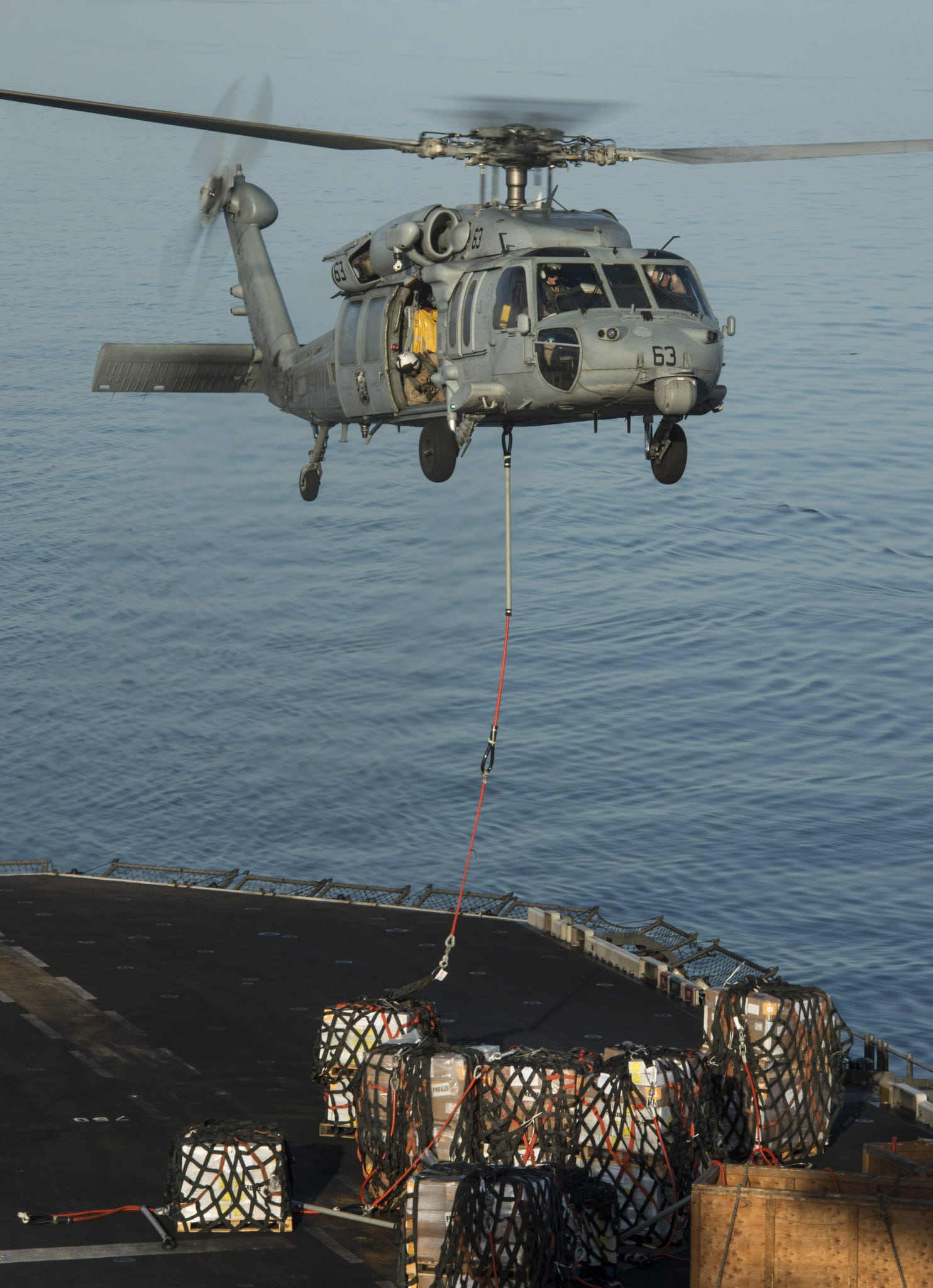The U.S. Navy’s Avionics Component Improvement Program (AvCIP) is currently accepting proposals, Naval Air Systems Command (NAVAIR) said. It plans to award more than $10 million in funding for fiscal 2018 projects though its AvCIP initiative, funded by the Office of the Chief of Naval Operations (OPNAV).

The working group selected and awarded funds to 10 projects that include the MH-60 helicopter’s multi-spectral targeting system infrared laser system. Photo: U.S. Navy
AvCIP was established in 2006, based on the Aircraft Engine Component Improvement Program. It aims to address current avionics system problems including decreased reliability and readiness degraders, impending obsolescence issues, and high sustainment cost drivers. Over the past decade, the program has realized a return on investment of over $287 million.
Previously, AvCIP has put particular emphasis on emerging technologies and staying ahead of the field. According to a budget justification document from 2012, the program’s mission draws inspiration from Moore’s Law. A computing term from the 1970s, Moore’s Law basically states that processing power in computers will double every two years. That concept is important to NAVAIR, and the U.S. military in general, when considering what technologies in which to invest.
“Although avionics association to digital technology brings challenges to keep pace with Moore’s Law and stay ahead of obsolescence, it also affords significant opportunity to reap benefits of emerging advancements,” the document reads. “Modern open system architecture technology insertion improves system upgradeability, by reducing integration time and cost. Avionics systems are the vehicles that enable platform connectivity and interoperability. AvCIP will help platforms integrate the modern technology that will allow them to keep pace with the rapid evolution of transformational network centric operations development.”
AvCIP, it goes on to state, is designed to support manned and unmanned, common and unique, fixed- and rotary-wing aircraft electronic systems. This includes various aircraft Communications, Navigation and Surveillance (CNS) capabilities and technologies. Sensors, combat identification, civil interoperability, safety, mission data processing and display, and network connectivity equipment are also cited by the AvCIP document.
“Just about every platform has problematic systems that are either failing to meet reliability objectives or are facing obsolescence issues,” says Candace “Candy” Chesser, PMA-209 program manager. “AvCIP resources enable acquisition managers to address these issues with near-term funds, rather than waiting for out-year Program Objective Memorandum money to arrive, or sacrificing existing internal funds that were planned for other uses.”
Ten of the 14 proposals reviewed last year received funding. Airborne targets electronic attack E/F-Band Digital Radio Frequency Memory obsolescence correction, MH-60 Multi-Spectral Targeting System Forward Looking Infrared Laser reliability improvement and EA-18G Airborne Electronic Attack Fiber Optic Harness reliability enhancement were awarded funding, to name a few.
Nomination funds for this year’s review are due Jan. 27. Those who pass this initial screening should then receive a request to submit a full project proposal, due Feb. 24. Participants are then to brief their proposals to a working group in May for further judgment. NAVAIR says the working group should be comprised of representatives from NAVAIR, Marine Corps Avionics Officers, Navy Resource Sponsors, Naval Supply Center Logistics managers, and programmatic and acquisition subject matter experts (SME). Review criteria for the proposals include cost, availability of funding types, extent of benefits, urgency, criticality and potential for successful execution.